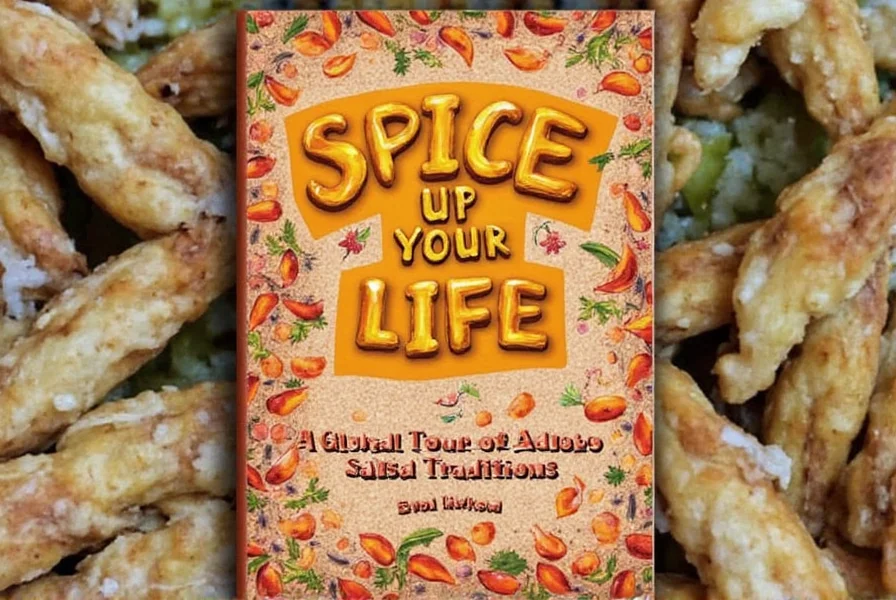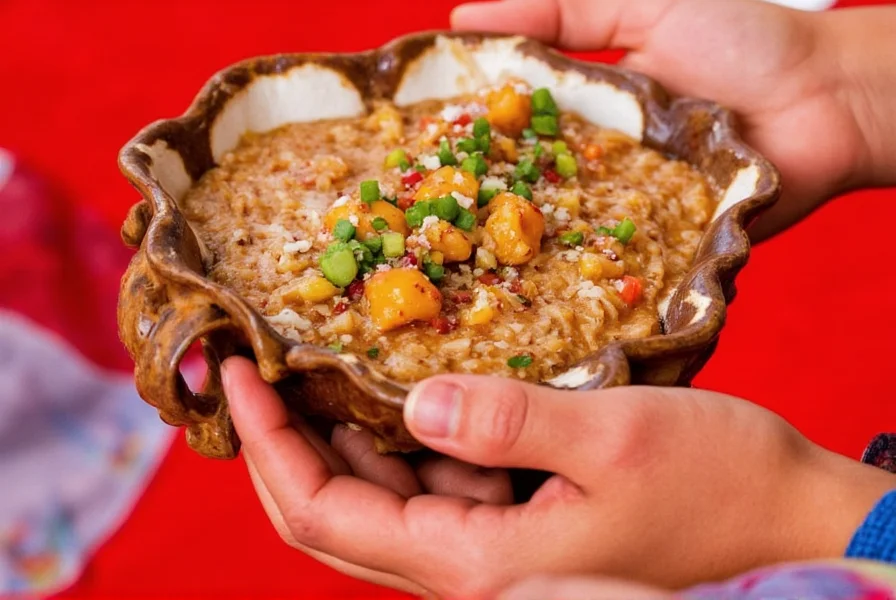Spice Up Your Life: A Global Tour of Adobo Salsa Traditions You Can’t Miss!
Welcome to a saucy journey around the world, where we explore the vibrant and aromatic traditions of adobo salsa. Whether you're a spice enthusiast or a culinary professional looking to deepen your knowledge, this guide is packed with flavor, culture, and practical tips to help you make the most of adobo in your kitchen.
Table of Contents
- What Is Adobo Salsa?
- Global Traditions & Regional Variations
- How to Make Your Own Adobo Salsa at Home
- Pro Tips for Perfecting Your Adobo Salsa
- Buying Guide: Best Adobo Salsas & Ingredients
- Conclusion
What Is Adobo Salsa?
The word “adobo” might conjure images of richly marinated meats from the Philippines or fiery pastes from Mexico. But what exactly is adobo salsa? At its core, it's a seasoned sauce or paste used to marinate or season food before cooking. While recipes vary widely by region, common ingredients include vinegar, garlic, chilies, herbs, and spices like oregano, paprika, and black pepper.
Adobo salsa acts as both a marinade and a finishing touch, bringing depth, heat, and tanginess to dishes. It’s versatile enough to complement grilled meats, seafood, vegetables, and even eggs!
Quick Breakdown of Adobo Salsa Components:
| Ingredient | Function | Typical Use |
|---|---|---|
| Vinegar | Tenderizer & preservative | Mexico, Philippines |
| Garlic | Flavor enhancer | Almost all versions |
| Chili Peppers | Heat source | Mexican, Caribbean, Central American |
| Oregano | Herbaceous note | Mexico, Puerto Rico |
| Soy Sauce | Umami boost | Philippines |
Global Traditions & Regional Variations
Adobo isn't just one thing — it's a global phenomenon that has evolved uniquely in different cuisines. Let’s take a quick tour across continents and explore how each culture makes adobo their own.
1. Mexican Adobo
Mexican adobo is often a smoky red paste made from dried chilies (like ancho, guajillo), vinegar, garlic, and spices. It's commonly used to marinate meats like chicken, pork, or goat before slow-cooking or grilling.
2. Filipino Adobo
In the Philippines, adobo refers to a cooking method rather than a sauce. The dish usually involves meat braised in a mixture of soy sauce, vinegar, garlic, bay leaves, and peppercorns. The resulting sauce is rich, tangy, and savory.

3. Puerto Rican Mojo de Ajo + Adobo
Puerto Rican cuisine blends citrus with adobo flavors. Mojo criollo is a garlic-citrus marinade, often combined with store-bought or homemade adobo seasoning containing salt, oregano, garlic powder, and pepper.
4. Spanish Influence in Latin America
Spanish settlers brought the concept of marinating meat with vinegar and herbs, which evolved into today’s adobo styles across the Caribbean and Central America. In some regions, adobo is sold in packets and used similarly to taco seasoning.
5. Cuban-Inspired Criollo Adobo
Cuban-style adobo is typically a dry rub known as *sofrito seco* or *adobo seco*. It combines salt, garlic powder, cumin, and oregano, and is used to season meats before roasting or grilling.
How to Make Your Own Adobo Salsa at Home
Ready to roll up your sleeves and make your own adobo? Here’s a simple, customizable recipe that works for almost any protein or veggie dish.
Basic Red Adobo Salsa (Mexican Style)
- 5–6 dried guajillo or ancho chilies
- 2 cloves garlic
- 1 tbsp white vinegar
- 1 tsp ground cumin
- 1 tsp smoked paprika
- 1/2 tsp dried oregano
- Salt to taste
- 1/2 cup water
- Toast the dried chilies lightly in a dry skillet until fragrant (don’t burn them).
- Soak them in hot water for about 20 minutes until soft.
- Drain and add to a blender along with garlic, vinegar, spices, and water.
- Blend until smooth, adjusting consistency if needed.
- Strain through a fine mesh sieve for a smoother texture (optional).
- Use immediately or refrigerate for up to a week — freeze for longer storage.
Pro Tips for Perfecting Your Adobo Salsa
- Balancing Heat: Mix mild and spicy chilies to control the intensity. Guajillo offers earthy warmth, while arbol or habanero kicks things up.
- Add Sweetness: A dash of molasses or brown sugar can balance acidity and enhance depth.
- Smokiness Boost: Add a pinch of chipotle powder or liquid smoke for that campfire feel.
- Fat Matters: Adding a bit of oil when toasting spices helps release aromatics and improves emulsification.
- Layer Flavors: Don’t skip the step of lightly roasting onions or garlic first; it unlocks complex flavors.
- Marinate Smart: For best results, marinate meats overnight in the fridge, or let veggies soak in adobo for at least 30 minutes before roasting.
Buying Guide: Best Adobo Salsas & Ingredients
If you're short on time or prefer store-bought convenience, here’s a breakdown of top-rated adobo salsas and ingredients available in most grocery stores or online. We’ve categorized them based on features, target users, and use cases.
Top 5 Store-Bought Adobo Salsas
| Product Name | Features | Advantages | Target Audience | Best For |
|---|---|---|---|---|
| La Costeña Adobo Salsa | Red chili-based, smoky flavor, thick consistency | Easily available, affordable, versatile | Home cooks, meal preppers | Grilled meats, tacos, enchiladas |
| Goya Adobo Seasoning | Dry mix with garlic, oregano, and pepper | Easy to apply, consistent flavor | Caribbean-inspired chefs | Roasts, stews, marinades |
| El Yucateco Adobo | Yucatán style, fruity undertones | Unique regional twist | Foodies, travelers | Seafood, tropical fruits, salads |
| McCormick Adobo Seasoning Blend | Pre-ground mix, US-made | Consistent quality, no additives | Busy professionals | Weeknight meals, stir-fries |
| Del Monte Adobo Sauce | Thinner consistency, balanced spice | Great for sauces and simmering | Casual cooks | Rice dishes, soups, stews |
Essential Adobo Ingredients to Stock Up On
- Dried Chilies: Ancho, guajillo, pasilla – perfect for deep flavor and color.
- Vinegar: Apple cider or white vinegar adds brightness.
- Garlic Powder: Saves prep time without sacrificing flavor.
- Ground Oregano: Essential for Mexican and Caribbean blends.
- Black Pepper: Adds subtle heat and complements other spices.
Conclusion
From smoky Mexican salsas to briny Filipino sauces and zesty Caribbean rubs, adobo salsa is more than a condiment — it’s a celebration of culture, tradition, and bold flavor. Whether you’re blending your own batch or grabbing a bottle off the shelf, there’s no shortage of ways to elevate your meals with this legendary blend.
Now that you’ve got the lowdown on adobo, why not experiment with different regional styles or create your own signature blend? The beauty of adobo lies in its versatility — so don’t be afraid to play with ingredients and find your perfect balance of spice, tang, and aroma.
Remember: Adobo isn’t just a sauce — it’s a passport to global flavors right from your kitchen. Happy cooking!











 浙公网安备
33010002000092号
浙公网安备
33010002000092号 浙B2-20120091-4
浙B2-20120091-4